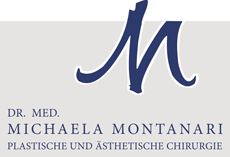Gynaecomastia (breast formation in men)
Associated terms:
male breast augmentation, male breast enlargement, male breast formation
Enlargement of the male breast can be caused by an excess accumulation of fat. On the other hand, it can also be caused by an excessive increase in mammary gland tissue, which can be congenital, the result of a hormonal disorder or the intake of certain medications. The imitation of a female breast shape is often a psychological burden for the affected men, so that activities in which they would have to show their upper body (e.g. visits to the sauna or swimming pool) are consciously avoided.
Before any surgical treatment, the causes of gynaecomastia must be clarified to ensure that other, non-surgical, therapeutic procedures are not necessary. A hormone test of the blood and an examination by a urologist are useful.
Enlargements on one side may indicate a tumour and require urgent treatment. A prior ultrasound examination of the breast may be necessary.
Brief overview:
Operation duration:
1-2 hours
Anaesthesia:
Anaesthesia or twilight sleep, combined with a local anaesthetic
Follow-up treatment:
Compression treatment with waistcoat for 6 weeks
Load restrictions:
2-3 weeks
The aim of the operation is to reduce the size of the enlarged male breast by removing fat and glandular tissue, thereby restoring the natural contours of the male chest. In some cases, a tightening of the skin mantle, e.g. around the nipple, may be useful.
In the case of a pure fat accumulation, a Liposuction (liposuction) to correct the problems by gently removing the fatty tissue through a 4 mm incision.
If there is also excess glandular tissue, this is removed through a fine skin incision at the lower edge of the areola. The nipple and areola remain intact. The glandular tissue is sent for histological examination to rule out a tumour, which is crucial for your safety.
Drains inserted during the operation are normally removed after 1-2 days. The suture material usually dissolves by itself and therefore does not need to be removed.
A compression waistcoat should be worn for six weeks after the operation to help the swelling to subside and to support skin tightening and contour formation. Any strenuous physical activity should be avoided during this period. However, the final result can only be seen after at least three months.
Comprehensive information about the planned procedure and its risks will be provided in the detailed and comprehensive consultation. individual counselling interview.




